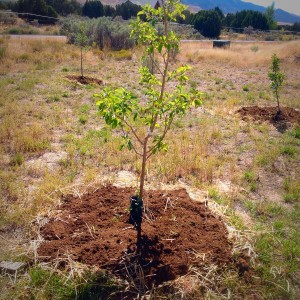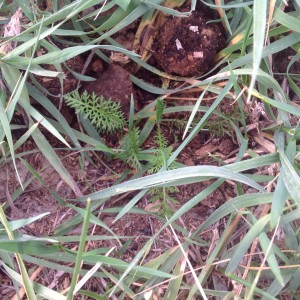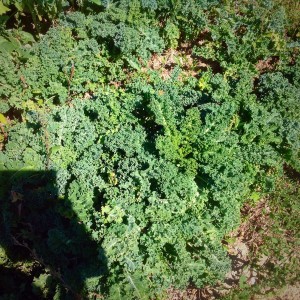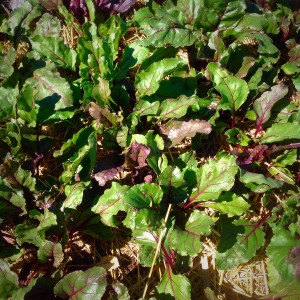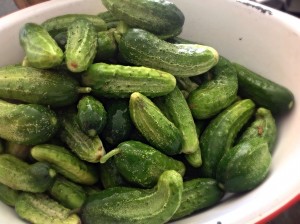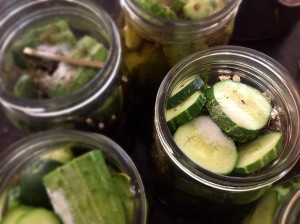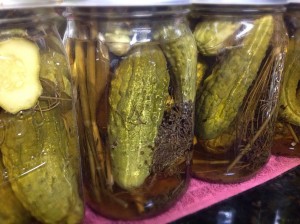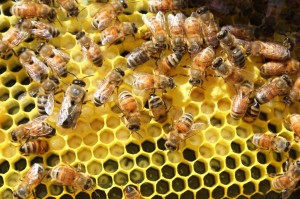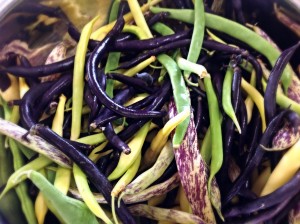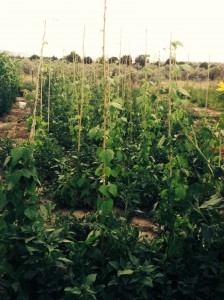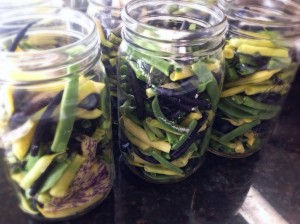In our orchard we are using a permaculture method called “guilding”. Around each tree we plant beneficial herbs and plants, that have several uses. Our goal is to have 5-10 uses for everything we plant here on the farm.
Around each tree we have what we jokingly call “rings of fertility” but in reality that is exactly what they are. Using a sheet mulching method we are creating fertility, in essence building our own top soil. Each ring extends just beyond the tree’s individual drip line, that is the area where the tree absorbs the most water and nutrients, right at the drip line. 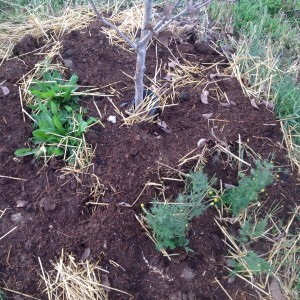 In each ring of fertility we plant our beneficial plants and herbs that have several functions. Right now we have clovers, chamomile, yarrow, plantain and comfrey planted around each tree. They will pull nutrients from deep down and deposit them up top in the form of mulch. They are also all medicinal herbs that we use.
In each ring of fertility we plant our beneficial plants and herbs that have several functions. Right now we have clovers, chamomile, yarrow, plantain and comfrey planted around each tree. They will pull nutrients from deep down and deposit them up top in the form of mulch. They are also all medicinal herbs that we use.
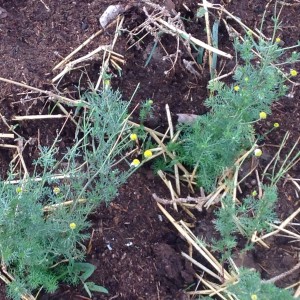 At the beginning and end of each season we will extend the ring, adding more plantings as we go increasing the soil fertility and variety of plants growing in the orchard.
At the beginning and end of each season we will extend the ring, adding more plantings as we go increasing the soil fertility and variety of plants growing in the orchard. 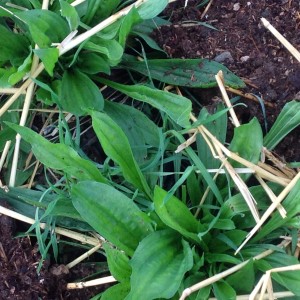 Eventually the rings of fertility will touch each other and we will have slowly created a biodiverse, fertile orchard that provides us with food, shade, medicinal, and culinary herbs along with beauty.
Eventually the rings of fertility will touch each other and we will have slowly created a biodiverse, fertile orchard that provides us with food, shade, medicinal, and culinary herbs along with beauty.

